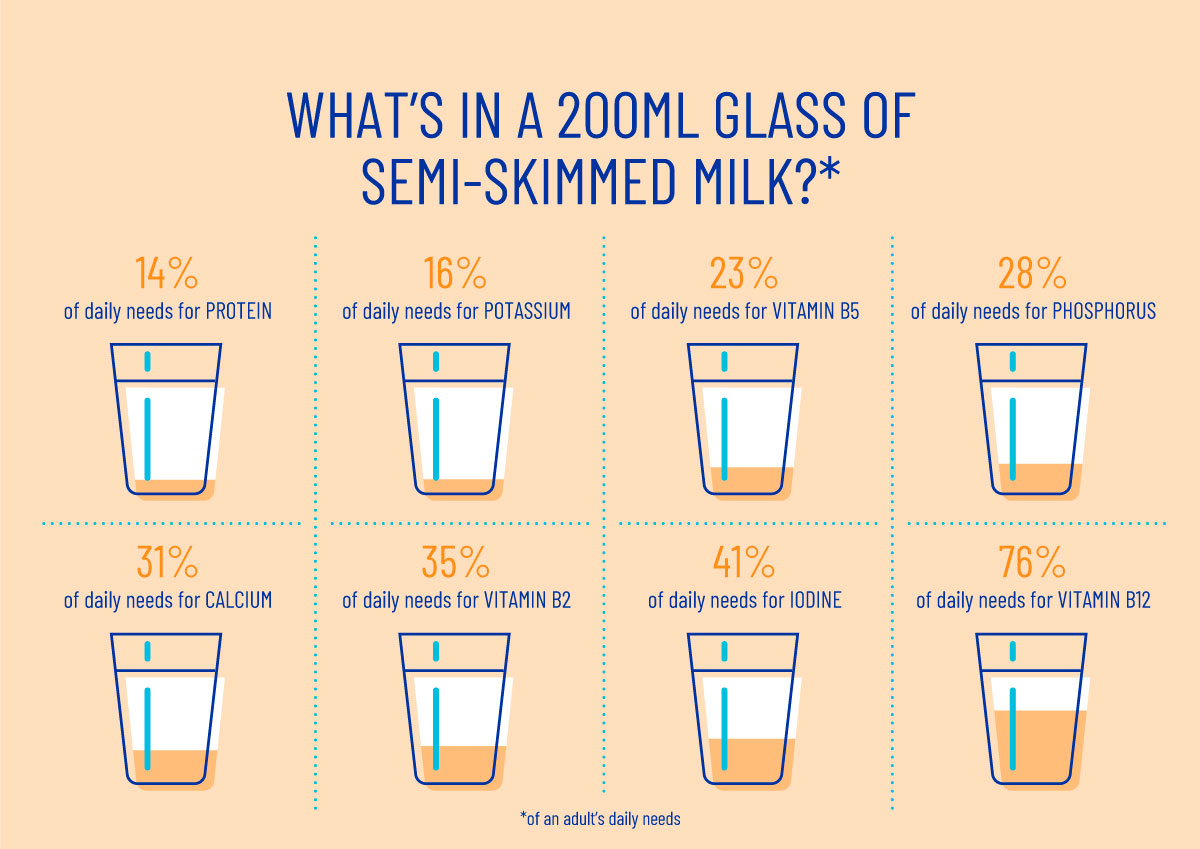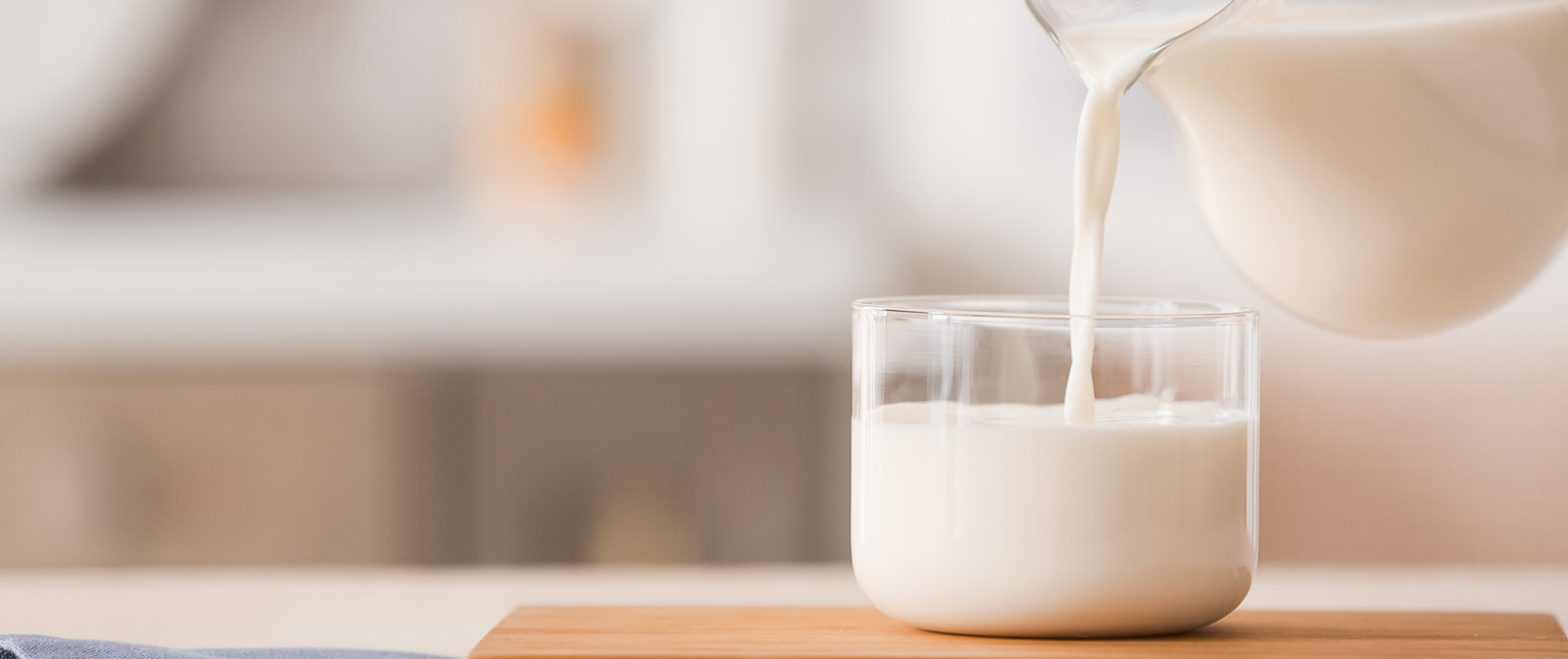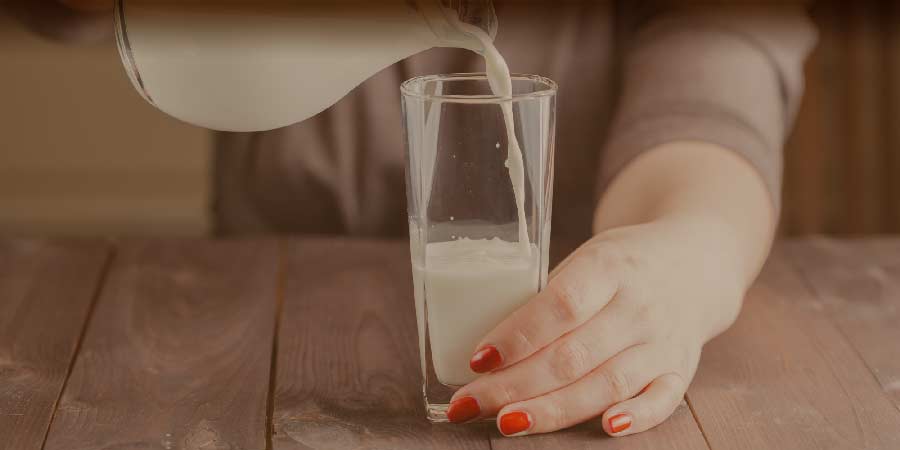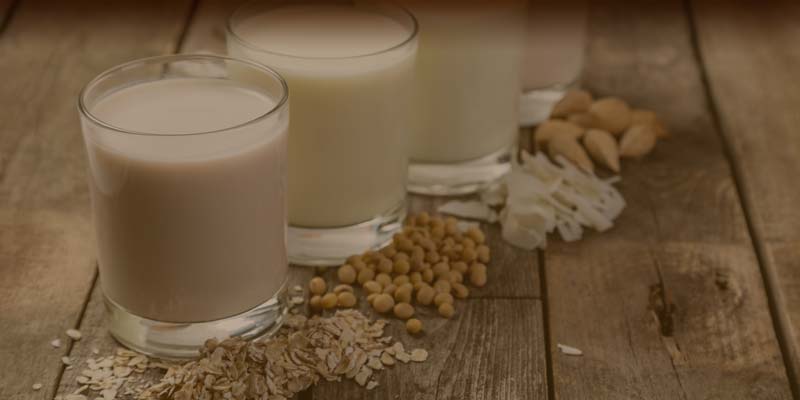Milk is an important part of our diet from when we are babies through to our senior years. Whether it’s a cup of warm milk before bed for toddlers, a glass of milk after a gym workout, a skinny latte when we’re shopping or custard served with our favourite pud, milk is versatile, tasty and good for us, thanks to the variety of nutrients it contains.
Better still, there’s plenty of variety to choose from. Whole, semi-skimmed, 1% fat and skimmed milk mean there’s something for all of us, whatever our dietary needs or stage in life.
Q: What nutrients are in milk?
A: Milk contains a variety of nutrients, including bone-friendly calcium and phosphorus, as well as potassium, which helps to keep our blood pressure within normal limits. All types of milk are rich in protein, too, a nutrient needed for building and maintaining muscle. Milk also provides iodine, a nutrient that’s lacking in many people’s diets and is vital for cognitive function – our ability to process information. Plus, milk contains several B vitamins, too, which make us feel less tired. As you can see, there’s a lot to milk nutrition!
Q: How do the types of milk differ?
A: All varieties of milk, including whole, semi-skimmed, 1% fat and skimmed, contain similar amounts of protein, and most vitamins and minerals. It’s the fat – and therefore the calories – that are different. Quite simply, less fat means fewer calories! This makes lower-fat varieties of milk a good option for those trying to lose weight.
200ml whole milk provides…
546kJ / 130kcal
7.4g fat
4.7g saturates
200ml semi-skimmed milk provides…
402kJ / 95kcal
3.5g fat
2.3g saturates
200ml 1% fat milk provides…
360 kJ / 85kcal
2.1g fat
1.2g saturates
200ml skimmed milk provides…
300kJ / 71kcal
0.6g fat
0.2g saturates
Q: Does milk add a lot of calories and fat to my diet?
A: Milk contributes to our calorie and fat intakes far less than you might think – just 4% of the calories and fat in the typical diets of adults come from milk. Meanwhile, there are plenty of products so everyone can pick a milk to suit their dietary needs. In fact, semi-skimmed, 1% fat and skimmed milk are all low in fat and get a green traffic for this nutrient. Skimmed and 1% fat milk are low in saturated fat, too – great news as reducing the amount of saturates in our diet helps to maintain normal blood cholesterol levels.
A 200ml glass of semi-skimmed milk provides just 5% of the calories and fat recommended for a day*
*Based on Reference Intakes of 2000kcal and 70g fat
Q: Do lower fat milks have fewer nutrients?
A: All types of milk contain a variety of nutrients. Removing some or most of the fat from milk doesn’t affect levels of protein or most vitamins and minerals. For example, all types of milk contain around 7g protein per 200ml glass (we need around 50g a day). The exception is vitamin A. This nutrient is removed with the fat so lower fat milks contain less.
Q: Do I need to cut down on milk because it contains sugar?
A: Plain milk doesn’t contain any added sugars. The sugar it does contain – lactose – occurs naturally. Health organisations around the world, including the NHS, agree there’s no need to avoid or limit the type of sugar found naturally in milk as it’s not harmful to health. Quite simply, you don’t need to worry about the natural sugars in plain milk.
Most flavoured milks do contain variable amounts of added sugar, but still provide a rich package of beneficial nutrients which includes vitamins and minerals. Please note that nutritional information on labels refers to ‘total sugars’ – this includes both lactose and added sugars.
Q: How much dairy per day should I have?
There’s no set amount. How much someone chooses to enjoy should be based on their lifestyle, what the prefer to eat and dietary needs. However, around the world, milk and dairy products are considered to be one of the four main food groups, highlighting the important part they play in helping us achieve a healthy balanced diet. The British Dietetic Association recommends three portions of dairy a day, where an adult sized portion is:
- A glass of semi-skimmed milk
- A 150g pot of plain low-fat yogurt
- A 30g matchbox-sized piece of cheese or 3 tbsp (120g) cottage cheese
Q: Do I need to give up milk if have lactose intolerance?
A: Many people with lactose intolerance find they can tolerate small amounts of lactose and so can still enjoy a little milk each day. Lactose-free milk and dairy products are also widely available and contain all the nutrients of regular dairy products, except for the lactose. This can help you to meet your needs for nutrients such as calcium. Some people with lactose intolerance also find they can still enjoy dairy products without side effects, such as a small pot of yogurt or a piece of hard cheese, the latter of which contains virtually no lactose.
Find out more about lactose intolerance
Enjoy long-life or UHT milk if you run out of fresh. They both contain similar amounts of nutrients, although fresh contains slightly more of some B vitamins.

Last reviewed: 03/2021
Next review due: 03/2023











